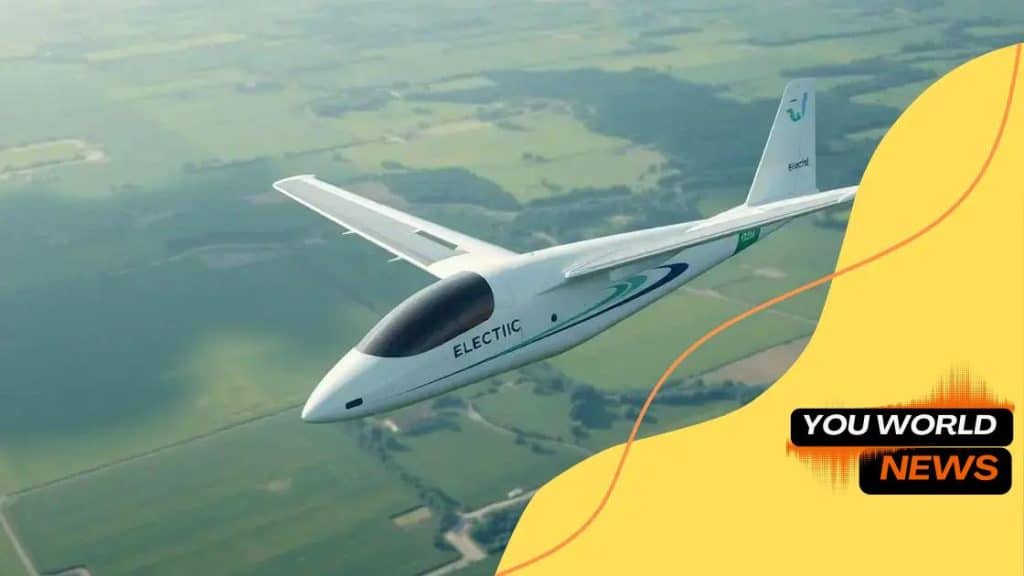The future of electric aviation and sustainable air travel

The future of electric aviation and sustainable air travel focuses on reducing emissions, enhancing travel comfort, and transforming global tourism through innovative technologies and eco-friendly practices.
The future of electric aviation and sustainable air travel is set to transform how we think about air travel. Imagine flying without the carbon footprint! This article dives into innovations and practices shaping a greener aviation industry.
Current advancements in electric aviation
Electric aviation is gaining momentum as technology evolves. Current advancements in electric aviation showcase how far we’ve come and what the future holds. This innovation promises to reshape our travel experiences.
Key Technologies Driving Progress
Several key technologies are making electric aviation feasible and efficient. Innovations in battery technology are crucial for improving flight range and performance. Additionally, advancements in aerodynamics help reduce energy consumption.
- High-density battery systems
- Lightweight materials to enhance performance
- Enhanced flight control systems
- Innovative propulsion methods
Furthermore, companies are developing hybrid and fully electric aircraft to cater to various short-haul travel needs. This growth is not only exciting but also essential for a sustainable future. Companies like Pipistrel and eAircraft are leading the charge with successful test flights, bringing concepts to life.
Impact on the Environment
The shift towards electric aviation has a significant impact on our environment. By reducing carbon emissions, electric planes will play a vital role in achieving global climate goals. These aircraft also promise to lower noise pollution, improving the quality of life in urban areas.
With increasing investments and research, the industry is on the brink of a revolution. As we embrace electric aviation, the anticipation of greener skies becomes a reality. Innovations in this realm not only help in technical advancements but also pave the way for a more sustainable world.
Benefits of sustainable air travel
Sustainable air travel offers numerous advantages, not only for the environment but also for passengers and airlines. One of the primary benefits of sustainable air travel is the significant reduction in carbon emissions. This change is crucial for combatting climate change and fostering a healthier planet.
Environmental Advantages
By adopting eco-friendly practices, the aviation industry can lessen its environmental impact. Using sustainable fuels and improving aircraft efficiency leads to a decrease in overall emissions.
- Reduction of greenhouse gases
- Lower noise pollution
- Preservation of natural habitats
- Conservation of resources
Moreover, sustainable travel can attract environmentally conscious travelers. These individuals are often willing to pay a premium for airlines that prioritize sustainability. This growing market enables airlines to enhance their brand image while fulfilling customer demands.
Economic Benefits
In addition to environmental perks, sustainable air travel can contribute to the economic growth of the aviation sector. By investing in green technologies, airlines can reduce fuel costs over time. Furthermore, increased efficiency in operations often leads to lower maintenance costs, providing another financial incentive for airlines.
As innovation continues, the demand for eco-friendly air travel systems is rising. Airlines that embrace these changes may gain a competitive edge, attracting more passengers and retaining existing ones.
Challenges facing the electric aviation industry

The electric aviation industry is on the rise, but it faces several challenges that could hinder its growth. Understanding these obstacles is crucial for paving the way for electric aviation. From technological barriers to regulatory hurdles, each challenge must be addressed for the industry to thrive.
Technological Obstacles
One of the most significant challenges is the limitations of current battery technology. While batteries are becoming more efficient, they still struggle to provide the necessary energy density for long-haul flights. Battery weight and charging times remain key concerns.
- Short range of electric aircraft
- Slow development of charging infrastructure
- Limited energy storage capabilities
- High costs of cutting-edge technology
Additionally, integrating electric systems into existing aircraft designs poses technical difficulties. It requires extensive testing and validation to ensure safety and reliability.
Regulatory and Infrastructure Issues
Alongside technological challenges, the regulatory environment can be a hurdle for electric aviation. Government policies must support innovation and create frameworks that are conducive to the development of electric aircraft. Many regions lack the appropriate airport infrastructure necessary for handling electric flights.
This includes everything from charging stations to hangar facilities that accommodate new aircraft models. Without the right infrastructure in place, the growth of electric aviation could slow significantly.
As the industry moves forward, collaboration among manufacturers, governments, and researchers will be crucial. Navigating these challenges effectively can unlock new opportunities and lead to breakthroughs in sustainable air travel.
Innovative technologies driving change
Innovative technologies are at the heart of the transformation in the aviation industry. The advancements in electric aviation are paving the way for a more sustainable future. New ideas and technologies are not only making air travel more efficient but also helping to reduce environmental impact.
Electric Propulsion Systems
One major area of innovation is electric propulsion systems. These systems are key to reducing emissions and fuel dependency. By using electric motors instead of traditional jet engines, aircraft can operate more quietly and with less pollution.
- Improved energy efficiency
- Lower operating costs
- Less noise pollution
- Higher reliability of systems
Electric aircraft designs take advantage of lightweight materials and advanced aerodynamics. Innovations in these areas lead to better flight performance and allow for longer distances to be covered with less energy.
Advanced Battery Technologies
Battery technology plays a crucial role in the viability of electric aviation. Recent breakthroughs in battery design are increasing energy density and reducing weight. Solid-state batteries and high-capacity lithium-ion batteries are gaining attention for their potential to power electric planes effectively.
As these technologies mature, they will enable longer flight ranges and faster recharge times. The push for more sustainable energy sources will further enhance the electric aviation landscape.
Collaboration between tech companies and aviation manufacturers is driving these innovations forward. Together, they are working to create a future where electric aviation becomes a more common sight in our skies, supporting both travelers and the planet.
The impact on global travel and tourism
The transition to electric aviation is set to transform global travel and tourism significantly. As electric aircraft become more common, they will change how people perceive air travel. This shift can make flying more accessible and environmentally friendly.
Reducing Carbon Footprints
One of the biggest impacts of electric aviation on travel is the reduction in carbon footprints. Electric planes produce fewer emissions compared to traditional jet engines, helping combat climate change. This is crucial for the travel industry, as consumers increasingly seek out sustainable options.
- Lower greenhouse gas emissions
- Less noise pollution in urban areas
- Enhanced environmental policies for airlines
- Increased consumer demand for eco-friendly travel
This commitment to sustainability can attract a new segment of travelers who may have avoided flying due to its environmental impact. Shifting to electric-powered flights encourages a greener tourism model that benefits destinations and the planet.
Enhancing Travel Experience
In addition to being more environmentally friendly, electric aviation can enhance the travel experience. With quieter engines, passengers will enjoy reduced noise during flights. This can lead to a more pleasant atmosphere both in the cabin and in airport locations.
Furthermore, as airlines adapt to electric planes, they may also invest in better airport facilities and services. Enhanced amenities could make travel smoother and more enjoyable for passengers. The overall travel experience can improve, benefiting everyone involved, from airlines to tourists.
As we embrace electric aviation, we pave the way for a travel experience that meets the demands of today’s environmentally conscious society. The impact will not only change how we fly but also support a more sustainable economy for future generations.
The future of electric aviation and sustainable air travel is bright and full of potential. As we embrace new technologies and innovative practices, we’ll see significant benefits for both the environment and the economy. With reduced emissions and a quieter travel experience, electric aviation is shaping a greener future. As more people recognize the importance of eco-friendly options, airlines will adapt, leading to even greater advancements and improvements. Embracing these changes will make air travel more sustainable and enjoyable for everyone, paving the way for a new era in aviation.
FAQ – Frequently Asked Questions About Electric Aviation and Sustainable Air Travel
What are the benefits of electric aviation?
Electric aviation reduces carbon emissions, enhances travel comfort with quieter flights, and decreases fuel costs, making air travel more sustainable.
How do electric planes impact the environment?
Electric planes significantly lower greenhouse gas emissions and noise pollution, contributing to a healthier ecosystem.
What challenges does the electric aviation industry face?
The industry faces challenges such as limitations in battery technology, regulatory hurdles, and the need for better airport infrastructure.
How will electric aviation change global travel?
Electric aviation will make flying more accessible and environmentally friendly, attracting eco-conscious travelers and reshaping the tourism industry.





